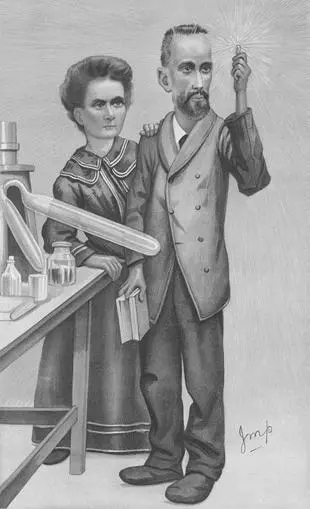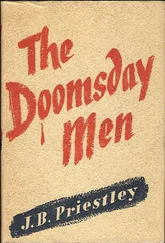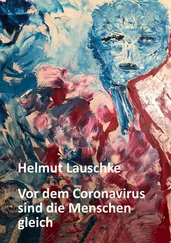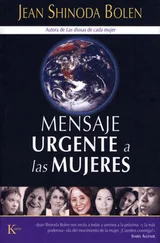The foundations of the Atomic Age were laid at the beginning of the twentieth century, creating both a new science and popular dreams of a utopia in which humankind had access to unlimited power. Szilard and his fellow atomic scientists grew up in this age of the atom. The hopes and fears provoked by this revolutionary science, expressed in fiction, newspaper articles and films, tell us as much about ourselves as they do about our understanding of the physical world. At times in this fantastic story, in which the dreams of the alchemists are realized and Strangelovean fantasies give birth to the ‘Hell Bomb’, science and fiction seem almost indistinguishable. To trace the roots of what Leo Szilard termed ‘the tragedy of mankind’ we need to follow the dream of the superweapon back to its origins in both scientific discovery and popular culture. 11
The story of atoms begins in the fifth century BC. The Greek philosophers Leucippus and Democritus believed that matter was made up of unchanging, indestructible atoms. These were the smallest things in the physical world. Our word ‘atom’ comes from the Greek word atomos , meaning ‘indivisible’. In 1803 John Dalton, a Manchester Quaker, revived atomism. In his hands it became a powerful tool in the dominant science of the nineteenth century – chemistry.
Dalton proposed a theory in which elements could be distinguished from one another by the relative weights of their atoms. The atoms of each element were unique, he said, and had the same weight. They could not be created nor destroyed, merely rearranged to form new compounds. It was impossible, said Dalton, for lead to change into another element, such as gold. To believe otherwise meant following in the footsteps of the alchemists.
Although there were lingering doubts as to whether atoms really existed, by the mid-nineteenth century Dalton’s theory had been widely accepted. But exactly 100 years after Dalton’s influential 1803 lecture, a new scientific era dawned. His axiom that no man would ever split an atom was about to be challenged.
Ernest Rutherford followed his wife, Mary, out into the night air. He was relieved to feel a slight breeze on his face. It was a sultry June evening and everyone was feeling uncomfortably warm – the women laced into constricting corsets, their husbands buttoned into starched collars and dinner jackets. It was a blessed relief to step out of the dining room and into the garden.
Earlier that day, Rutherford, who was visiting Paris, had called unannounced at Marie Curie’s laboratory in the rue Cuvier. He had been surprised to find that for once she was not working at her bench. Instead, she was defending her doctoral thesis in the students’ hall of the Sorbonne. Her four-year quest for new elements had been successful, and today, 25 June 1903, the examiners had given their scientific seal of approval to her arduous research.
Rutherford also called on his old friend Paul Langevin, whom he had known as a research student at Cambridge eight years earlier. Langevin immediately invited the Rutherfords to a celebratory dinner with the Curies at his villa opposite the Parc Montsouris, together with Sorbonne physicist Jean Perrin and his wife. Now, as they stood in Langevin’s garden, Marie’s husband, Pierre, suddenly drew a small glass vial from his waistcoat pocket. As he held it up against the night sky between his thumb and forefinger, a bright new star suddenly shone from the heavens. A soft, blue-green light illuminated their upturned faces. It was the new, luminous element that had made headline news around the world – radium.
Ernest and Mary would remember the moment for the rest of their lives. The vial was partly coated with zinc sulphide and contained a relatively large quantity of priceless radium in solution. ‘The luminosity was brilliant in the darkness and it was a splendid finale to an unforgettable day,’ wrote Ernest. 12The dinner guests were transfixed by the ethereal radiation. It was as if they were seeing a light from another world, a strange realm that nobody yet fully understood.
The light of transmutation shone brightly in the Paris night. Rutherford and his co-worker Frederick Soddy had explained the previous year that in watching the glow they were seeing atoms of radium disintegrate, as the element transmuted down through Dmitri Mendeleev’s periodic table towards dull, inactive lead. It was something everyone had thought was impossible. In the eerie light of the radium, Ernest could see that Pierre’s hands, like those of his wife, were painfully swollen and scarred from constant exposure to the penetrating rays emitted by the radioactive element. He even seemed to have difficulty holding the tiny vial steady between his fingers.
The Curies had led the world in isolating the new radiant element and identifying its properties. Ernest Rutherford’s work on the causes of radioactivity was similarly groundbreaking, but as yet his ideas, though published, were just hypotheses. So when Mary Rutherford asked over dinner where radium’s energy came from, Pierre’s reply was frank: ‘We just don’t know.’ Had it absorbed the rays of the sun? Or did its energy come from some force within the element itself? No one could say for certain. ‘We have made a discovery of forces and power beyond present knowledge, quite beyond imagination,’ said Pierre solemnly. ‘It is a revolution… we are walking into strange territory, a no man’s land of scientific mystery.’

Marie and Pierre Curie pictured in a chromolithograph by ‘Imp’ from Vanity Fair (1904).
At 44, Pierre Curie was twelve years older than Ernest Rutherford. A tall and dignified man with a dark, neatly trimmed beard, he looked genuinely worried as they discussed the future uses to which their discovery might be put. Would the human race benefit from knowing these ‘secrets of nature’? Looking round at the faces of his fellow diners that June evening, he asked a question that has since tormented many scientists: ‘What if such a dangerous force falls into the hands of warring men?’ 13
Within a mere forty years, the power of the atom, revealed in the Curies’ glowing vial of radium, would be released by a group of scientific refugees from Europe working in – of all places – a squash court on the campus of Chicago University. When the first plutonium bomb was detonated in the Nevada desert just before dawn on 16 July 1945, the flash of atomic light was so bright that it could have been seen from the moon. It was as if a second sun had risen in the sky, a new and terrible morning star, lighting the way to an uncertain future.
The last decade of the nineteenth century saw a series of astonishing discoveries about the nature of matter, culminating in the moment when Pierre Curie held aloft that beguiling vial of luminous radium. But the first hints of the new physics came from a small German university in 1895. It was a discovery that quite literally transformed our way of looking at ourselves and the world.
On a late November afternoon, a physicist at the University of Würzburg was setting up an experiment with a Crookes tube, a glass vacuum tube with wires sealed into each end which allowed an electric current to build up inside. It was named after the famous English chemist Sir William Crookes, who had pioneered the investigation of electrical discharges in vacuum tubes, principally what were called cathode rays. When the current to the tube was switched on, a violet or green glow could be seen starting at the positive (anode) end of the tube and gradually fading before it reached the negative (cathode) end.
The experimenter, Professor Wilhelm Conrad Röntgen, had constructed a box of black, light-proof card around the glass tube. He was fascinated by the tube’s ability to create rays. Today he wanted to see if any could penetrate beyond its glass walls. But, as the electric current built up inside the tube, he became aware of a strange green glow coming from a bench a metre away. He switched the current off, and the glow faded.
Читать дальше













